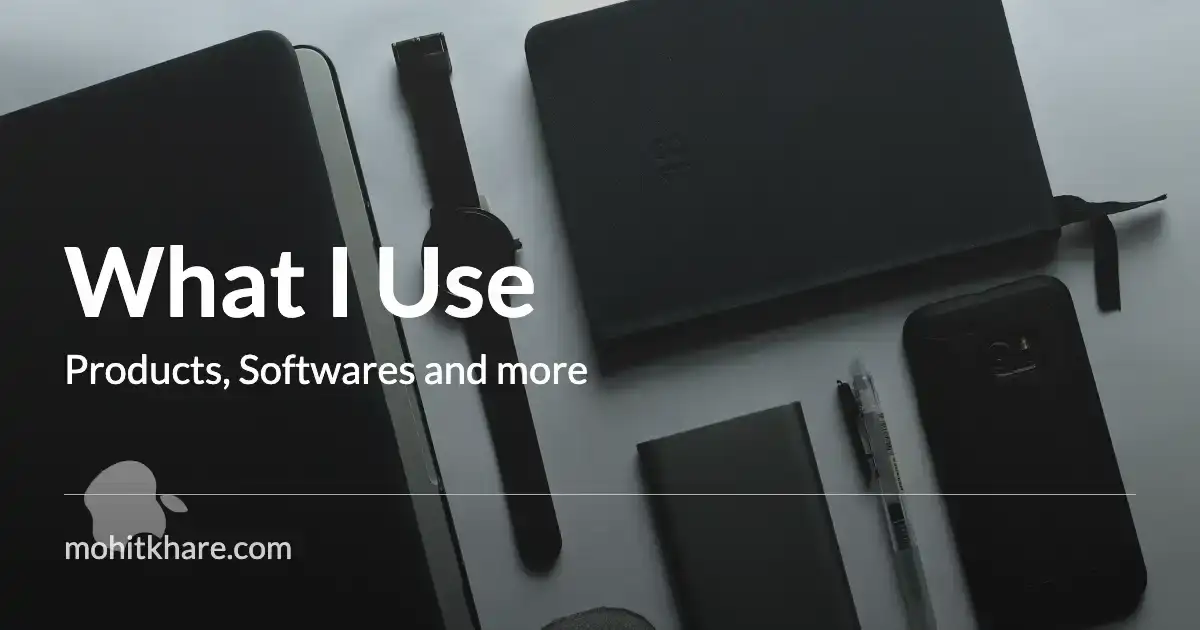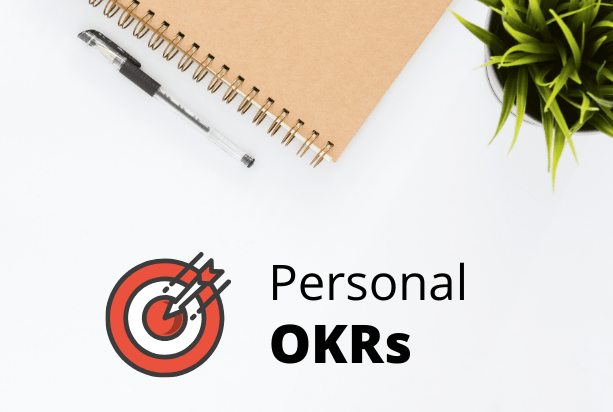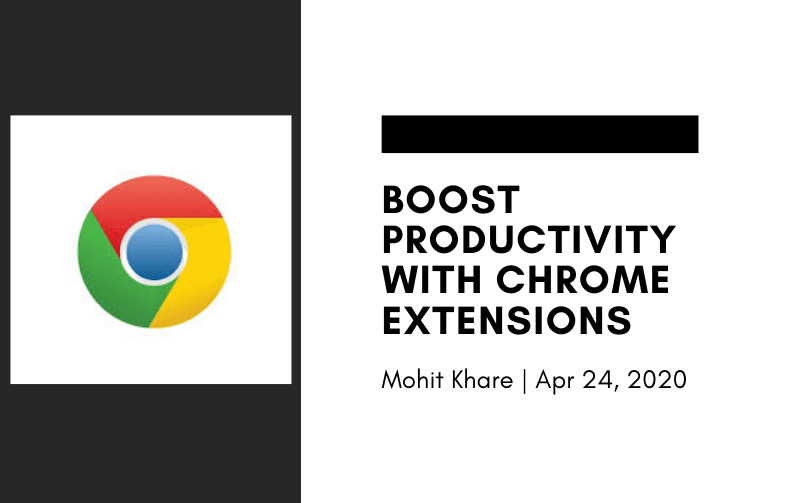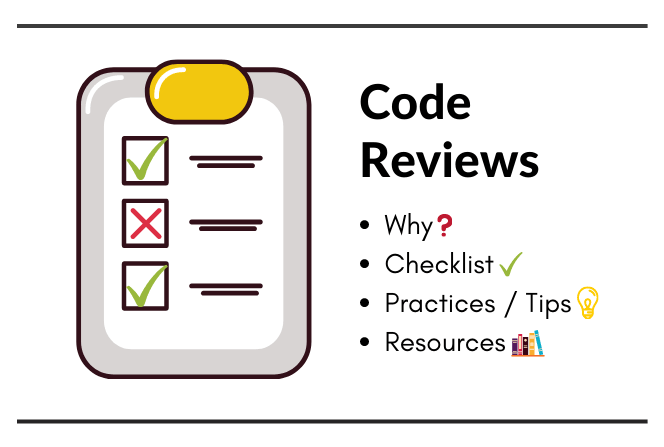Book Notes : Let's Talk Money
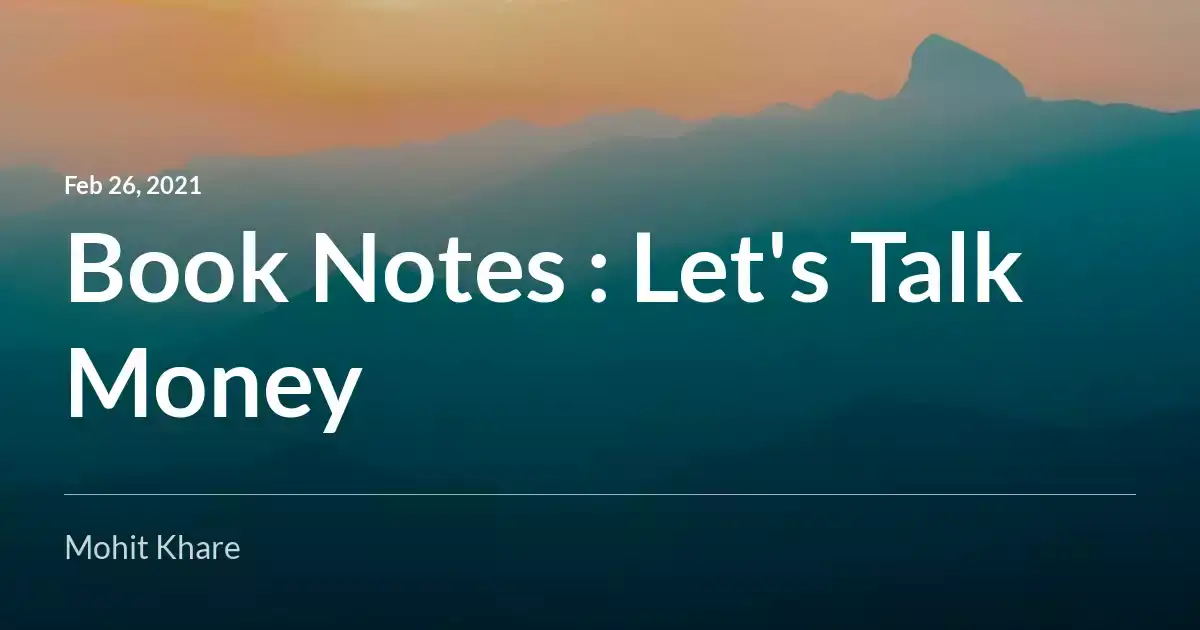
Get latest articles directly in your inbox
These are highlights/notes from book “Let’s Talk Money” by Monica Halan. These are personal notes, would recommend reading the book, but in case you are short on time - just skim through these notes 😊
In case you are looking for some book recommendations - Check Learnshots.
THE MONEY ORDER
Managing your finances is not a luxury for the rich, it is hygiene for everyone.
A good money box is one that allows you to streamline your cash flows. It builds in safety nets for preserving your savings in the face of an emergency: typically a medical emergency, a job loss, or death of a salary- earning family member.
DON’T STASH THAT CASH!
Think of a cash flow system as simply a way to demarcate your money between spending and saving.
Three buckets for the three functions of money. These are income, spending and saving. If we can separate the money into these.
My salary account I label ‘Income Account’. The second account I call ‘Spend- it Account’. The third is called ‘Invest- it Account’.
Once your salary hits your Income Account, within thirty minutes (OK, take a day– but do it) move out your monthly expenditure to your Spend- it Account. And whatever is left, move it to your Invest- it Account. Salary accounts are usually zero- balance accounts, so sweeping all the - money out is possible.
Keep a few thousand in your Income Account as a cash reserve.
Use your Income Account as the sump for all kinds of money inflow that we get. There is always some other cash that flows into your life. Cash gifted by parents or relatives, a bonus, a refund from work, a matured - insurance plan, rent from a property you own, dividend on stocks or mutual funds, return of money borrowed.
Next, remove from the Income Account the money you spend each month. We all roughly know what the monthly expenditure flow is like– we know - that we spend 25,000 or 40,000, move 10– 15 per cent more than what you think you spend into your Spend- it Account. That’s all you have for this month’s expenses– rent, EMI, - food, salaries to pay, fuel, credit card bills, utilities, pocket money, medicines, whatever.
Set a calendar alert if the month ahead has a premium payment due for a medical, house, car or term plan, and move that much more money to - take care of this additional spend.
Whatever is left in your Income Account, move it, in another thirty seconds (OK, at most thirty minutes!), to your Invest- it Account. Leave a bit extra in the Income Account in the first three months to see how much I need in my Spend- it Account. If it runs dry, move more - from Income to Spend. Moving money from Invest- it to Spend- it is not allowed in my book.
In three months you’ll know what’s going on with your money life. If your Invest- it Account is empty, you know you’re spending too much. You - should be able to move a minimum of 10 per cent of your income in hand each month to your Invest- it Account
Putting a label on money prevents people from using it for any other purpose. This is called ‘mental accounting’ and it means that we like to - separate our money into separate accounts according to intent, and dislike using it for any other use.
You are doing OK if you have a three account system that separates your income, spending and savings; your spending on living costs is no more than 45– 50 per cent of your take- home income; your EMI payouts are no more than 25– 30 per cent of your take- home income; your savings - are at least 15– 20 per cent of your take- home income.
BUILDING YOUR PROTECTION
A rough rule of thumb says keep aside six months’ living costs.
The cash flow system that we created earlier will tell you what your monthly transfer to your Spend- it account is. Multiply that by six.
Getting a good medical cover is probably more important than buying life insurance.
You need a basic cover of Rs 3–15 lakhs per person. Use the Rs 3 lakh number for smaller towns and less posh facilities, and the Rs 15 lakh - number for metros how does it perform on the metric of price. Two, how does it perform on the metric of benefits. Three, how does it perform on the metric of - claim
Unlike a life cover, where your premium gets locked when you buy a term cover, the premium of a medical cover changes as we age.
If you are buying from an agent, ask him to show you the price comparison at ten-year differences. If you are forty, ask for the price of the - policy as it is today when sold to a fifty-, sixty- and seventy-year-old. If he can’t do the work, find another agent.
We buy a medical cover so that when faced with a hospital bill we don’t have to dip into our savings. The deal is simple: You pay an annual - premium and when you get hospitalized, the insurance company pays the bill.
Ensure that you have a policy that does not have something called a ‘co-pay’ clause. This is called ‘co-pay’ because you agree to pay a - certain percentage of a bill to share the costs with the insurance company
Look for a policy that does not have a co-pay clause. Ask your agent to mail you the policy document and then do a search on the words co-pay
Two, check for a ‘pre-existing’ disease clause. It is a good idea to disclose your correct present and past medical history to the insurance company when you sign up for the policy. Else - they will have a tool in their hands to refuse your claim.
Check if your policy has a ‘disease waiting period’. Many companies have a cool-off period of thirty to ninety days during which they will not pay any claim
Check if your policy has ‘sub-limits’.
A sub-limit is a limitation on what the company will pay out for specific things. We usually stumble upon a sub-limit on room rent
Five, check for exclusions. A policy will list out diseases, conditions and medical services that the policy does not cover. Dental treatment, - pregnancy and cosmetic surgery are standard exclusions
Six, ask how much of the costs before and after hospitalization the policy will cover. You can claim expenditure made on doctor’s fees, - medicines and diagnostic tests done before a planned hospitalization and for three months afterwards.
Seven, ask for a list of ‘day-care’ procedures that don’t need you to stay for twenty-four hours in a hospital any more.
Look at the ‘no-claims bonus’ feature. When you don’t make a claim in a year, you get rewarded by the insurance company. It does this by - giving a ‘no-claims bonus’ (NCB). The usual way is to raise your cover by 10 per cent for the same premium for a medical policy, the moment of truth is when you file a claim. Does the insurer pay up? How much does he pay? Is the process easy? How - quickly does the company respond to complaints?
Look at the claim-complaints data and look for a policy that has less than thirty complaints on every 10,000 claims made.
The best way to get a larger cover is to use what is called a ‘top-up’ plan.
Critical illness and personal accident. You should be able to add a ‘rider’ to your existing policy on the policy renewal date.
A rider is an add-on at a very low cost to a basic - policy. Riders look attractive, but I recommend that you buy a stand-alone accident policy from a general insurer.
A personal accident plan has four covers: death, permanent disability, permanent partial disability and temporary total disability. For death - or permanent disability, you mostly get the entire sum assured.
Best solution will be to work with a good financial planner to buy your medical plan. Use the information here to see if the planner knows more than you or not. If you don’t hear the words pre-existing, sub-limits, claims and waiting periods, you know that you need to keep - searching.
Note: I wrote a guide on Term Insurance that will help you choose the right insurance.
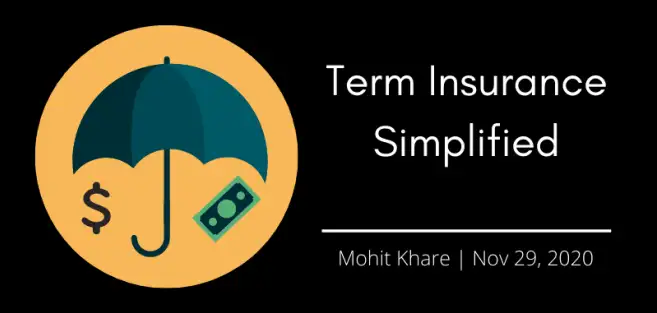
- You are doing OK if … along with your work cover, you have your own family floater; you live in small-town India, and have a family floater between Rs 3 and 7 lakhs; you live in the large metros, and want the five-star - hospitals, and have a minimum of Rs 15 lakhs’ family floater;
WHAT IF YOU DIE?
- You need a life insurance cover for only one reason: to protect your family’s financial health if you die an untimely death.
- The other big expense that will hit the family if you suddenly disappear is the debt you have. Home loans, car loans, education, personal - loans, credit card debt
- In its purest form, a life insurance cover should pay your beneficiary a lump sum when you die for the price of the premium. If you outlive - your policy, no money comes back.
- A pure life insurance policy is called a ‘term plan’. This is not a policy that your agent or bank will - tell you about. Why? Because it is cheap and does not soak up too much of your money.
- Simply ask the question: Over what time does my money double? Then divide 72 by that number.
- The day you realize that it is in your best interest to separate your investment and insurance products, is the day you move solidly towards - building your financial security.
- The rule of thumb is that you need eight to ten times your take-home annual income.
- In addition to a cover for your income, you need to buy insurance for all the debt you have.
- When’s a good time to buy? Buy as soon as you have dependants or the possibility of getting dependants arises
- Buy the policy the moment you realize that other people in the family will suffer financially if you die suddenly.
- The younger you are the cheaper you lock in for.
- Rule One: Get a cheap plan.
- Rule Two: When buying a term cover, check the claims experience of the insurance firm.
- When do I not need a life cover?
- If you have no dependants on your income, you don’t need any life insurance cover.
- Your investments are large enough to look after all your expenses – current and future.
- The job of the life insurance cover is to serve you till you are debt-free and financially independent.
FINALLY, WE’RE INVESTING
- Find a way to raise income or spend less. There is no third option.
- The important thing to do is to start rather than wait for that golden moment when you have a big amount to hit the market with
- It is better to have something in investments, even if it earns less, than not to have anything at all. It depends on how many people you have in your family; it depends on how secure your job is. It depends on what other products you have - already in your money box. It depends on whether you are an entrepreneur, a salaried employee or a consultant.
- Remember that each financial product you buy must solve a problem you have.
- Pull out your mental money box and look at it again. Remember that the first cell has your cash flows, the second is the emergency fund, the third your medical cover, and the fourth has the life cover. We now create three more cells in the box for our investments. We name each cell: - The first is called Almost There; the second, In Some Time; and the third, Far Away.
- Any planned expense that will happen within two to three years is a short-term need that you put down under Almost There
- The right time is now. No matter what your age, stage or circumstance is, you need to begin investing right away.
LET’S DE-JARGON INVESTING
Debt is just an umbrella term for all financial products that are based on borrowing. Equity is ownership of a business and the risk that it brings, either directly (through stocks) or indirectly (through mutual funds). Real assets are those that can be physically seen. Debt and - Equity are called ‘financial assets’, while real estate and gold are called ‘real assets’.
Think of your bank FD rate as your benchmark or measuring rod.
The role of debt products in your money box is to provide money at short notice and to provide stability to your long-term investments. Debt - products need to give you a degree of certainty that the money will be there when you want it.
Not more than 5–10 per cent of your total portfolio goes into gold.
Real-estate story. It is a horrible, clunky, chunky investment that has lots of costs, which people forget to add to the profit - maths. It is illiquid – you can’t sell in a hurry.
Your portfolio needs periodic investments for maintenance.
Your debt allocation is equal to your age; at age thirty, no more than 30 per cent of your portfolio is in debt products; at age seventy no - more than 70 per cent in debt products; the rest is equity.
EQUITY
- Equity is a slow cook and not instant noodles. What you need to understand is that when we talk about investing in equity, we are not talking about gambling on the street. This is a - legitimate marketplace with rules.
- SEBI defines a large-cap company as one that features within the first 100 companies by market cap on the stock market. A mid-cap is a company - that ranks between 101 to 250 by market cap, and small-caps are 251 and below.
- As inflation rises in the system – the input costs for the firms go up – they are passed on to the consumers in the form of higher final - prices. The ‘margins’ or the profits of the firm, therefore, get protection from the effect of input price inflation.
- In a growing economy, a broad market index will always have the well-performing stocks of that time. Any investment that allows you to buy the index stocks in the same proportion will give you index returns. You also get the benefit of the dividends declared and the bonus shares - issued as you hold the index. Therefore the super returns over time.
- It is not market timing but time in the market that matters. Time in the market matters because it smoothens out the volatility of the market.
- When investing in the stock market, give it the same patience you give real estate – a good equity portfolio needs five years of patience, ten - years to see consistent returns, but actually will slow-cook over fifteen to twenty years.
- A ULIP will lock you in with a particular company’s asset management and shuffling is expensive. What you want is a product where exit is - possible, cheap and easy.
MUTUAL FUNDS
- A mutual fund is a way to pool the money of a large number of small investors and hand it over to experts to manage it.
- Equity mutual funds buy into stocks of listed companies. Debt mutual funds buy bonds and debt papers issued by the government and firms. Gold - funds buy actual gold.
- There are two ways to slice the debt fund market. One, according to tenor, or the holding period of the bond. Two, according to the quality of - debt paper bought by the fund.
- The bonds that a liquid fund buys are short-maturity bonds, or bonds that will mature within an average of three months.
- If you have liquid funds with more than one fund house, you can instantly access Rs 50,000 multiplied by the number of liquid funds you hold, - no matter whether markets are open or not.
- The large bond-holding takes away the volatility that equity brings in a bad stock market. But equity adds to the overall returns in a good - stock market.
-I need a short-term product for my short-term needs. I need a medium-term product for my medium-term needs. I need a long-term product for my - long-term needs.
I use debt funds to keep my emergency money, to keep money that I need in the next eighteen months.
They buy actual gold and track the price of gold in real time. The product is called a gold exchange traded fund (ETF)
Remember, the role of gold in your money box is to provide diversification and a hedge against inflation.
Diversification reduces the negative impact of an imploding stock. And conversely, it reduces the positive impact of an exploding stock. A bit - like yoga – you are more balanced, the highs are not that high, the lows not that low. Quite a good place to be in.
An active fund is like the taxi – you are choosing a mutual fund where the fund manager has a view on the market, chooses his stocks to fit - the investment mandate, and then manages the money by trading every day
The index will buy the thirty stocks in the same proportion as they have in the Sensex and just stay with the investment.
An ETF also tracks an index like the Sensex but lists its units on a stock exchange, unlike a mutual fund. To buy and sell mutual funds you - don’t need to have a demat account. But to invest in an ETF, you need a demat account
An ELSS is an equity fund that gets this tax benefit. It has a three-year lock-in period, and you cannot exit before that. Remember not to - tick the dividend or dividend reinvestment option in an ELSS. Go for growth.
Do look at the expense ratios of the funds you buy.
Direct plans remove the sales commission embedded in the expense ratio and make the product cheaper for you to buy.
A SIP is a systematic investment plan. Think of this as a recurring deposit, but instead of putting money in a fixed deposit, you are making - periodic investments into a mutual fund.
A systematic transfer plan (STP) is a facility that allows you to space out a big investment over time
A systematic withdrawal plan (SWP) is a facility to periodically redeem your units to generate an income.
PUTTING IT ALL TOGETHER
Expense ratio, this is usually a percentage of the money in the investment. If you invested Rs 1 lakh and the money is now worth Rs 2 lakhs, - you will pay the expense ratio on Rs 2 lakhs
exit load- which is the cost the fund manager charges to take care of the costs of exit.Low returns usually come with a guarantee. To get a higher return, you will need to take more risk.
A lock-in means that you cannot withdraw your money for a certain period of time. For example, the lock-in with the PPF product is fifteen - years. The lock-in with a five-year bank FD is, well, five years.
Early exit can happen in two ways. One, you want to exit before the lock-in gets over.
Two, what happens when you exit a long-term product? You need to ask: Is there a cost to an early exit?
Each product you allow into your money box must answer this question: How long do I need to hold it for it to work for me?
The most well-known tax break is Section 80C, which gives you a break of up to Rs 1.5 lakhs (in 2018) if you invest in the eligible products. You get this break if you contribute to your PF, PPF, life insurance premiums, ELSS mutual funds, NPS, special five-year FDs and a bunch of other expenses.
There are two kinds of ‘capital gains’ that you need to be aware of. Short-term and long-term capital gains.
Keep about 5–10 per cent at the most of your net worth in gold if you want to. The exact asset allocation between debt and equity will vary from person to person. The thumb rule for equity is 100 minus your age. If you are thirty years old, you should have 70 per cent of your money - in equity
The thumb rule is this: the closer you are to the goal, the lesser should be the equity part of your portfolio.
You need three bank accounts when you are starting out. As you get more used to the cash flow system, you can use just two. Your salary account is your income account where all inflows drop. The Spend-it account can be a joint account with your partner or parent or child: whoever shares the routine household expenses with you.
The third account is the Invest-it account into which you move either the leftover money from expenses as savings or the amount you target - each month towards investments. Remember to choose banks that have excellent interfaces – both mobile and online – and good security systems.
It takes me less than thirty seconds to make an investment or redeem it. Remember we are trying to get your time free for things that matter.
If your expenses are large and you find your savings deposit quite full till about the fifteenth of the month – put part of the spending money - in a liquid fund.
When we need the money from this cell we’ll need it in a hurry – usually within a week or ten days.
- First is the reliable FD.
- Keep my emergency money in an ultra-short-term debt fund.
- Medical cover is needed as the costs of hospitalization have gone through the roof.
- Going all the way to 100 per cent in equity mutual funds for my goals that are beyond seven years.
Retirement fund This cell has a mix of products. The core is your PF and PPF. The rest is in equity funds
Gold and real estate Gold has its own cell. But it is tiny. No more than 5–10 per cent of your total portfolio is in gold, and that too paper - gold, not jewellery. Real estate has its own cell,
Keep it down to the one house you live in.
MY RETIREMENT
You are financially free when you don’t need to work to pay your bills. You have enough assets that generate enough income today and for the - rest of your life.
Divide 72 with your inflation number to get the number of years it will take to double your current expenses.
At age sixty, you need between eighteen to thirty-five times your annual expenses at retirement to retire with the lifestyle you are used to.
saving becomes a habit when you remove what you want to save from your spending money
Your oxygen mask is your retirement kitty; don’t ignore that while you look after your current and more near-term money needs.
WHAT KILLS A MONEY BOX?
- I don’t invest in things I do not understand.
- Fear, greed and sudden knee-jerk actions have the potential to derail your carefully constructed money box.
- Also your money box is a dynamic entity and it needs periodic checks to see if your situation has changed, or there are better products on offer.
More book summaries
Follow my reading list on Goodreads.
I hope you learned something new. Feel free to suggest improvements ✔️
I share regular updates and resources on Twitter. Let’s connect!
Keep exploring 🔎 Keep learning 🚀
Liked the content? Do support :)


